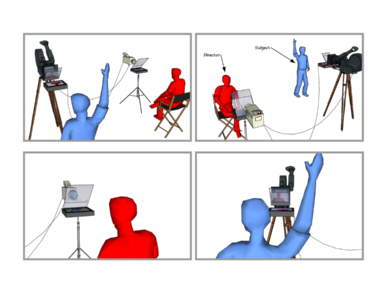by Natalia I. Kucirkova, University of Stavanger, Norway.
As a research professor and co-founder of a research network supporting various educational technology (EdTech) companies, I’ve had firsthand experience with both sides of funding decisions: the funder or grant-maker, and the grantee or recipient of funding. I understand the critical importance of funding in the education sector, which has historically been underfunded. Particularly in the realm of educational technology, non-state funders, such as Venture Capitalists, philanthropic funders or private donors, play a pivotal role in shaping the field’s trajectory.
In my recent report, I explore opportunities for collaboration between funders and researchers to enhance the impact of EdTech design, implementation, and evaluation. I propose that such collaborations have the potential to improve development efforts, elevate impact metrics, and ultimately enhance educational outcomes for children using EdTech.
An effective EdTech research evidence portfolio encompasses both reactive and generative research approaches. Reactive research responds to current learning needs, measuring immediate benefits, while generative research explores innovative patterns and approaches to engagement and learning. Achieving a balance between these approaches is essential, as effective EdTech solutions should both meet children where they are and propel them toward their potential. In the realm of venture capital (VC) funding, this balance translates into supporting well-tested theories while also funding innovations like generative AI that explore new paradigms. It follows that VC investors must ensure that technology development advances education ethically, supporting innovations that generate new knowledge while aligning with established learning theories.
Such an approach involves supporting technologies that address all three stages of learning: early, intermediate, and late phases that correspond to students acquiring declarative and procedural knowledge, consolidating the acquired knowledge, and refining it through tuning their understanding. Understanding how different EdTech solutions correspond to different learning stages is not obvious to an untrained researcher. However, through greater collaboration with researchers, investors can better achieve a balance between the type of learning they promote through the funds they provide to EdTech innovations.
My second recommendation relates to the inclusion of researched impact into pre-funding decision-making processes, as a way to incentivise the EdTech industry. Several reports from 2023 show that most EdTech solutions, despite being very popular, do not have research-based foundation and do not have evidence of researched impact. Before committing to EdTech investments, funders should assess if proposed solutions are grounded in scientific principles and if research studies have informed their development. Evaluating the team’s capacity to act on evidence is also crucial. By signalling research as something that matters for investments, funders can incentivise more EdTech companies to prioritise research and impact as they scale their solutions.
Lastly, while many investors rely on media sources for idea generation, leveraging educational research databases like ERIC could lead to more informed investment strategies. Namely, validating an EdTech solution’s scientific proposition involves accurately evaluating opportunities and effectively leveraging research resources. It ensures that investment assumptions are not based only on business metrics but also published literature on which impact can be expected over time.
Here I recommend that investors collaborate with researchers to benefit from each other’s insights. One easy-to-implement way of collaborating is to ask researchers to evaluate or validate the scientific proposition of an EdTech solution considered for funding. Assessing a company’s theory of change is a common way to establish its scientific proposition. A robust, research-based theory of change should be supported by published studies aligning with the product’s key features, focusing on learning outcomes and social impact rather than business metrics. The assumptions underlying the flow of effects should be grounded in peer-reviewed literature, meeting the criteria set by research organizations and foundations when considering companies for school testing. Evaluating a company’s theory of change, grounded in peer-reviewed literature, provides a solid foundation for assessing the potential impact of its EdTech solution.
Additionally, learning from researchers about the four stages of empirical research—ranging from testing basic features to scaling solutions—can guide investors in evaluating the maturity and effectiveness of EdTech products. Emphasizing the importance of contextual understanding and robust validation processes, investors can adopt a more informed approach to supporting impactful EdTech innovations.
The examples presented underscore the transformative power of collaboration between institutions, universities, and educational entities with investors and funders. This collaborative approach holds the promise of significantly amplifying the impact of educational technology, a field that has not historically received adequate attention in terms of impact prioritization. Given the profound influence of EdTech on learners and its substantial funding from non-governmental sources, active collaboration has the potential to unlock substantial positive outcomes, particularly considering its wide accessibility and potential for profound impact on learners.

Author
Natalia Kucirkova, University of Stavanger, Norway













